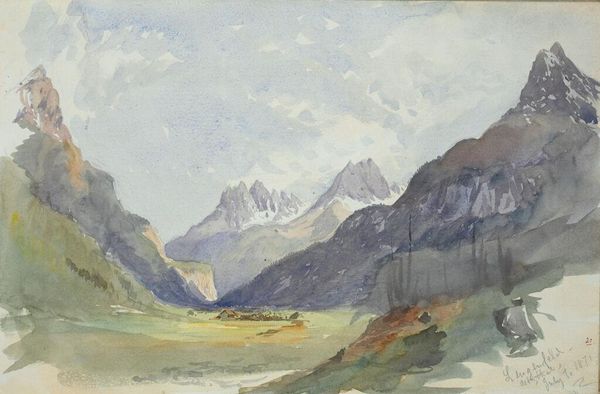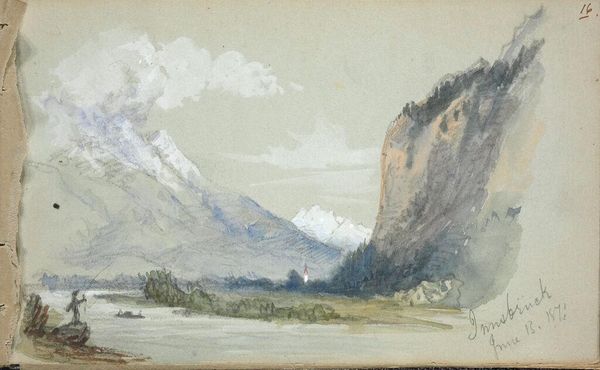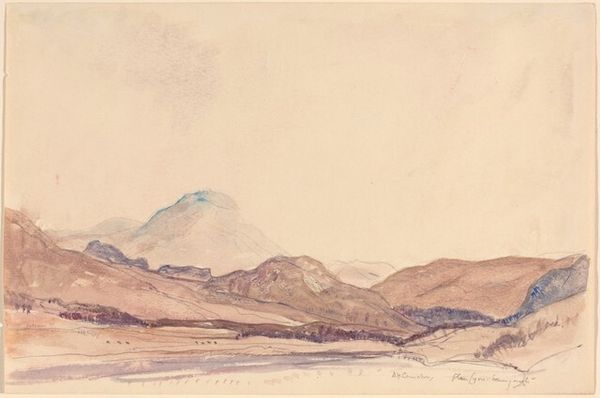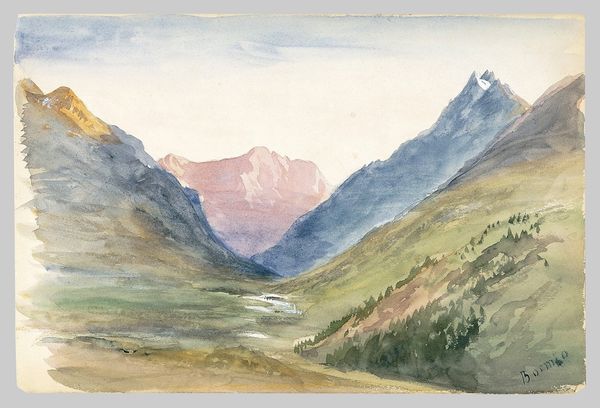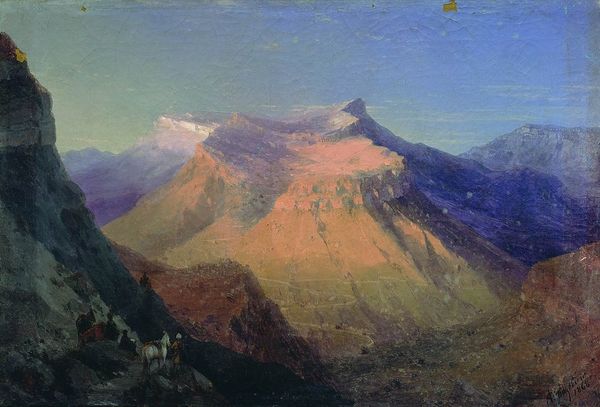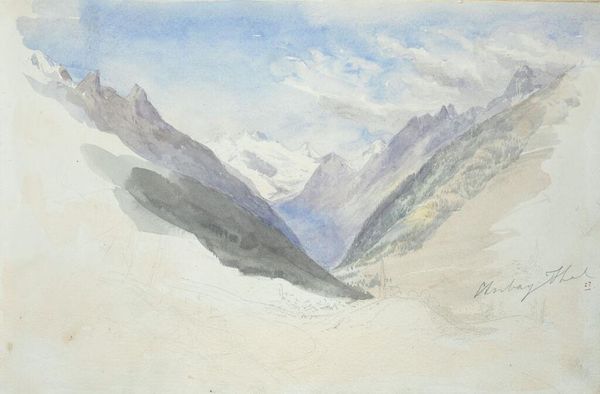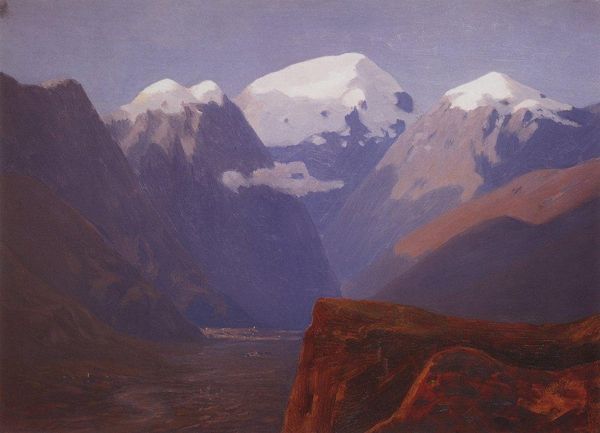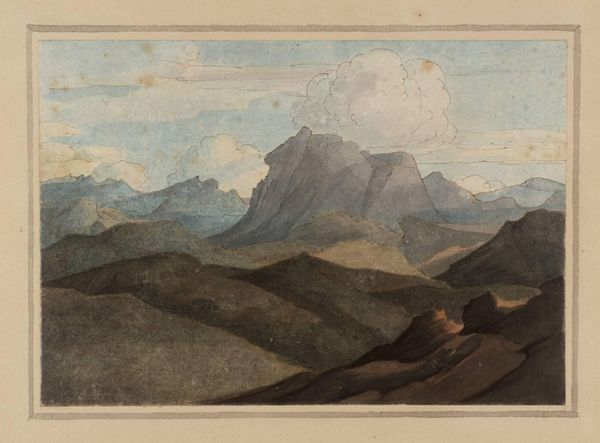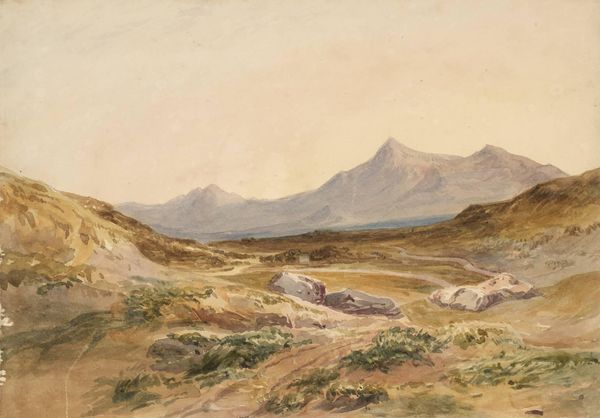
painting, plein-air, watercolor
#
sky
#
rough brush stroke
#
painting
#
plein-air
#
landscape
#
oil painting
#
watercolor
#
romanticism
#
mountain
#
watercolor
Copyright: Public domain
Curator: Eugène Delacroix painted "The Coast of Spain at Salabrena" in 1832, employing watercolor and oil in plein-air. Editor: It feels both grand and fleeting. The muted colors evoke a quiet strength, like a distant memory viewed through a haze. There’s a melancholy beauty in the sheer scale of it. Curator: Indeed, Delacroix masterfully balances the broad strokes capturing the dramatic mountains and the subtle gradations of the sky, which adheres closely to the formal tenets of Romantic landscape. Editor: And how might Spain have felt to a French artist in 1832? Were the motifs of escape from industrial life prevalent in Northern Europe finding their way South, tinged with a subtle, if not overt, Orientalism given the region’s historical and political contexts? Curator: One can see it within the arrangement itself. Note how Delacroix utilizes horizontal planes, a layered effect drawing the eye from the dark waters toward the light on the snowy peaks; that deliberate visual pacing gives form to a feeling. The use of line dictates affect. Editor: Yet that formal control also feels implicated in colonial gazing. Romanticism had a knack for idealizing the foreign precisely as a means of eliding complex power dynamics. Are we romanticizing someone else’s home? Curator: It's undeniable that period, and Delacroix himself, existed within systems of power, expressed as the artwork appears to observe a static beauty rather than engaging with the lives of its inhabitants. Editor: Right. Considering our own perspective becomes crucial then. Delacroix provides this beautiful surface but perhaps now it is ours to critically engage that perspective, seeing landscape not only as aesthetic object but also a situated space. Curator: I agree. In considering both the structure and the social context, we gain a deeper appreciation. Editor: A richer understanding that sees not just the what, but also the why.
Comments
No comments
Be the first to comment and join the conversation on the ultimate creative platform.
